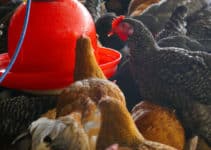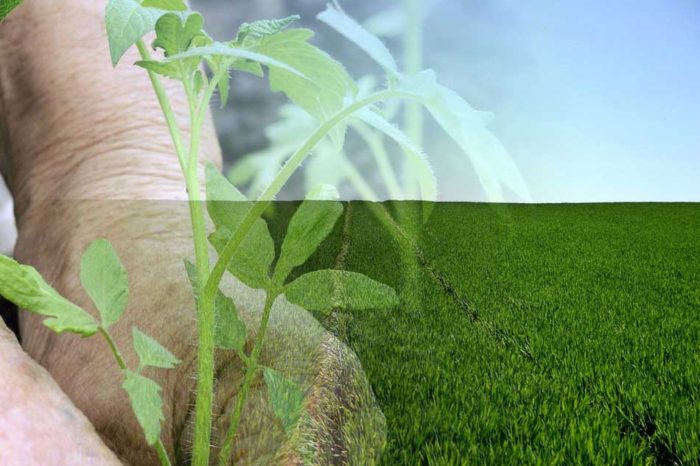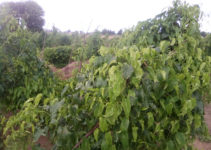Negative Effect of Fly on Cattle and the Need to Have a Good Cattle Fly Control Mechanism Put In Place
One of the serious crises bedeviling cow fattening or cattle and livestock kept in confinement is how to prevent and implement a good cattle fly control mechanism, flies are some of the most troublesome external parasites.
There are numerous species of flies and all of them can have a negative impact on the health, productivity, and profitability of your cattle.
For you to succeed in cattle fattening technique, a good cattle fly control and management system for your cows, which are usually in confinement needed to be put in place.
For without any good cattle flies control put in place both the cattle farmer and the cattle themselves are in for serious trouble.
The onset of the wet seasoning in most parts of northern Nigeria, comes with it high relative humidity, moisture-laden environment, moderate sunshine, and less dryness, which is a good recipe for the proliferation of disease-causing bacteria in cattle and other livestock.
Horn and face flies are the two major species of flies that cause the most problems. Face flies carry the bacteria that cause pink eye, Moraxella bovis. This bacteria (M. bovis) causes tremendous damage to the eye and tremendous economic losses.
Pink eye bacteria tend to develop resistance to antibiotics, which can further frustrate treatment. Therefore, one of the keys to pink eye prevention is good cattle fly control mechanism.
Any serious farmer should put in place a working mechanism on how he is going to improve the well-being and welfare of his livestock especially those kept in complete confinement. i.e for cow fattening purposes.
This article will help you in simple terms understand the importance of having a good cattle flies control mechanism in place, the dangers of flies, their economic implication, and how to control them.
As we all know flies are capable of preventing cattle from grazing and eating continuously and comfortably.
This implies that there will be reduced performance, and poor weight gain resulting in poor health.
Some species of flies feed on blood from the cattle, others feed on normal secretions from cattle eyes and nose, and some lay eggs on cattle that develop into grubs under their skin. Several species

Recommended for you:
4 Unique Advantages of Cow Fattening You Need To Know
How Cow Fattening Can Make You Rich
Utilizing the Right Season to Start Cow Fattening to Ensure Steady Cash Flow
Negative Effect of Flies on Cattle
- Some species of flies are disease carriers (vectors) they spread disease from one animal to another.
- This causes irritation and blood loss to cattle and ultimately decrease their weight gain. Horn flies can also transmit some blood-borne diseases.
- Face flies carry the bacteria that cause pink eye, Moraxella bovis. This bacteria ( bovis) causes tremendous damage to the eye.
- The face fly irritates the animals’ eyes by using their rasp-like mouthparts to cause tear production. Pinkeye reduces average daily weight gains, due to pain and reduced eyesight, which often reduces the market value of the cattle.
- Face flies are the main cause of pinkeye, so having an effective cattle flies control mechanism in place to stop the spread of pinkeye will go a long way in improving the health of your cattle thus eliminating or reducing economic losses.
- Flies are capable of causing lumpy skin disease, it is a viral disease that affects cattle. It is transmitted by blood-feeding insects, such as certain species of flies and mosquitoes, or ticks. It causes fever, and nodules on the skin and can also lead to death, especially in animals that have not previously been exposed to the virus. This particular viral also reduces the market value of the cattle, resulting in economic losses.
- African animal trypanosomiasis is a parasitic disease that causes serious economic losses in livestock from anemia, loss of condition, and effects on It is caused by the tsetse fly a biting fly acting as a mechanical vector. This disease is prevalent mostly in central and southern Africa, and in some parts of Asia and South America. Tsetse fly control programs in Africa can help reduce the incidence of African animal trypanosomiasis

Recommended for you:
5 Tricks You Can Easily Use To Tame a Cow
How to make cow fattening profitable
6 Unique Ways You Can Keep Your Cow Healthy During the Fattening Period
How to Control Cattle Flies
- Good sanitation is the key to preventing major bacterial infections, always clean up animal dung and manure, because they serve as a breeding ground.
- Cow dung, uneaten feed, and hay from the barn area should be cleared, cleaned and removed, and spread out over a field. You can form compost manure with it which can later be used to farm maize and other crops that can be useful both to the farmer and his animals.
- The use of dust bags and strips, insecticide ear tags, pour-on products, oilers or sprays, and oral larvicides.
- For best prevention results, be sure to always alternate the ear tag drug you use each year. It’s the best way to combat drug resistance because both the face flies and horn flies develop resistance to insecticides over time.
- Make sure to follow label directions and consult your veterinarian for additional guidance.
- You can use the biological method of control such as predatory wasps and dung beetles can be used to decrease fly populations.
- Periodically spraying your cattle throughout the year can be an effective way of reducing the fly population.
- There are different types of insecticides out there for cattle fly control, collaborate and seek the advice of your veterinarian to develop a plan and pattern for flies control. By putting into consideration the safety and health implication of the insecticide and drug used for both the farmer and the cattle.







